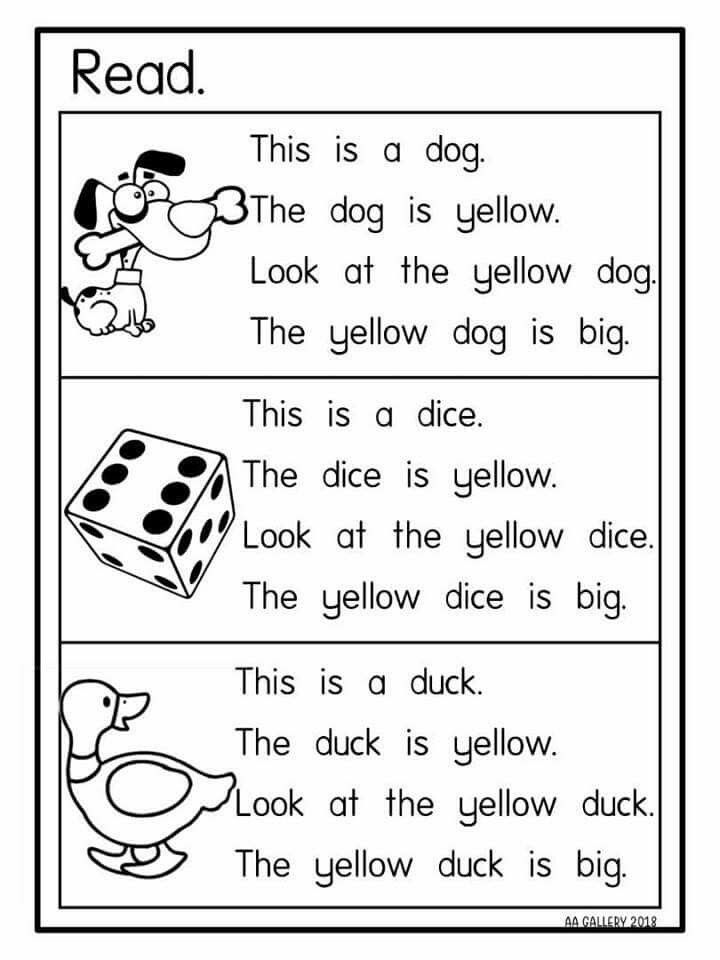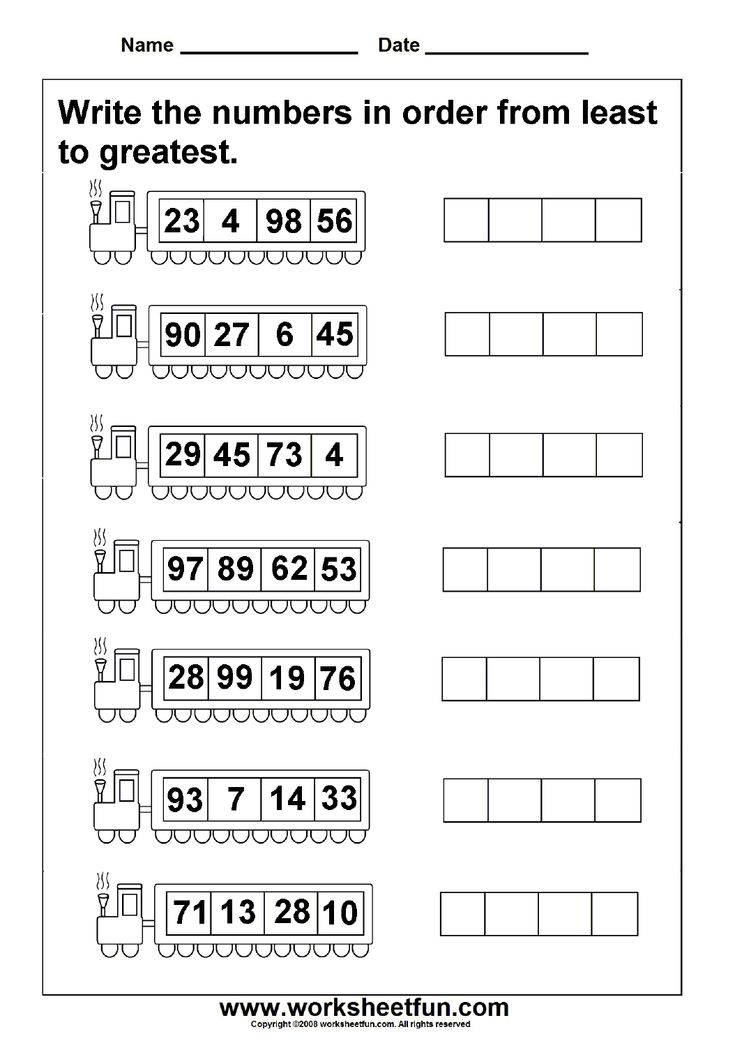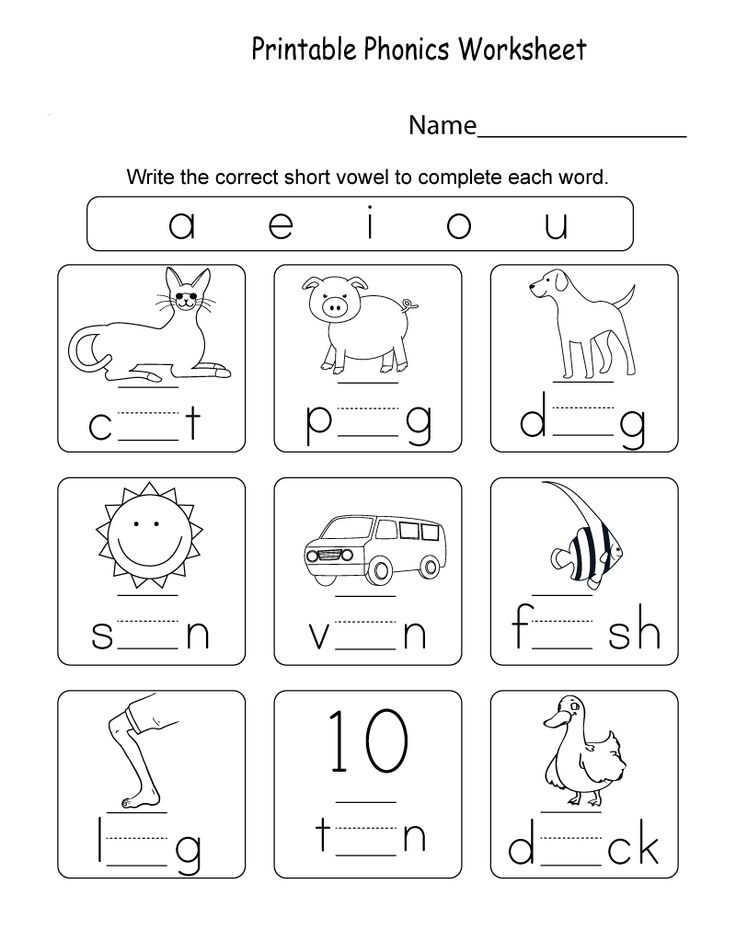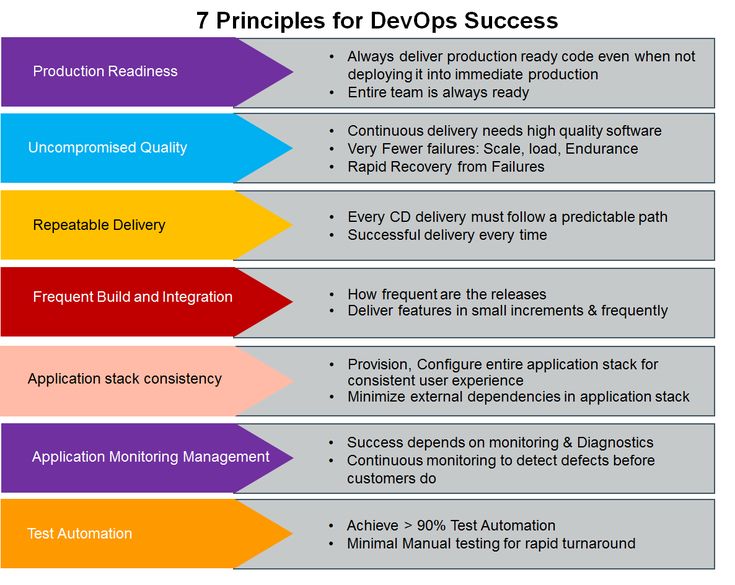How does an excavator work
The Excavator Explained - Everything about Excavators
This article was last updated on October 31, 2022
Excavators are an essential piece of heavy equipment for most construction projects. Often referred to as diggers, excavators are used for all kinds of jobs like material handling, landscaping, demolition, mining projects, trenching, river dredging, and construction.
The Makeup Of An ExcavatorThe chassis of an excavator is made up of a boom, dipper, and bucket. These pieces connect to a cab that sits on a rotating house. Most excavator cabs can rotate a full 360 degrees for increased visibility. Excavators are available with either tracks or wheels depending on the manufacturer and the nature of the project.
Excavators are available in a variety of sizes and classes and can weigh up to 180,000 lbs. There are many other attachments for excavators that can take the place of the digging bucket to diversify the machine. By swapping out the bucket for an auger, drill, ripper, or rake, excavators can be used for many different jobs.
The best way to choose what excavator rental is needed for your project is to assess what exactly you need the machine to do. Identifying the right size of excavator, what attachments are needed, and how long you need the equipment will inform your decision to rent an excavator or buy one. It can be more efficient for a job to rent the right size of equipment for what is needed instead of trying to make one piece fit for a variety of jobs.
Excavators are often used for earthmoving projects or projects where lots of digging is required. That being said, the variety of attachments and excavator rental sizes available make these excavation machines useful in excavation projects of all sizes.
Typically, excavator sizes and classes are broken down into the following categories: mini, medium, large, demolition, long-reach, and wheeled.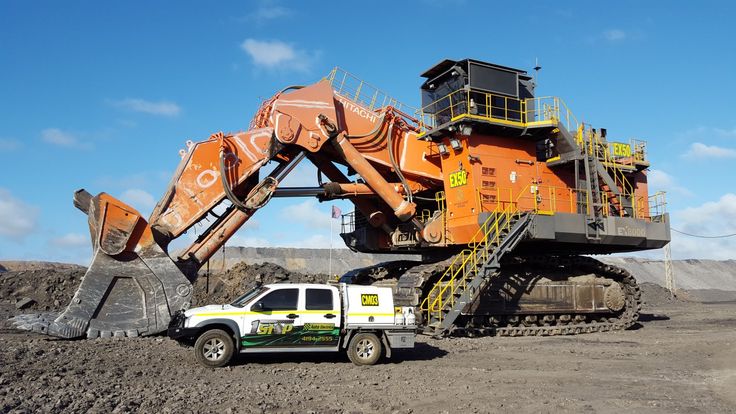 There are also specialty excavators made specifically for mining. Which size of digger you choose to buy or rent is often determined by the excavator's operating weight.
There are also specialty excavators made specifically for mining. Which size of digger you choose to buy or rent is often determined by the excavator's operating weight.
From a landscaping project to the construction of a completely new high-rise skyscraper, you can expect to see an excavator on almost any construction project, especially in the early stages. The variation in size allows them to be used in big construction projects and small backyard renovations. In addition to the different sizes of excavators, there are also several different types of excavators.
What Are The Different Types of Excavators?The Cable vs. Hydraulic Excavator
The difference between the cable and hydraulic excavator comes from how the parts of the machine move. Cable excavators use a series of steel wires and cables to move the main parts and replaced steam shovels in the early 1900s.
Hydraulic excavators work by allowing the operator to use levers to control the movement of the hydraulic system to push and move the cylinders that control the boom and bucket of an excavator.
Find the average excavator rental rates in your area
The 6 Kinds of ExcavatorsThere are seven key types of excavators available on the market: Crawler Excavators, Dragline Excavators, Suction Excavators, Long-Reach Excavators, Mini Excavators, and Wheeled Excavators.
1. Crawler Excavators:
The most commonly recognized excavator used for mining, trench digging, and landscape grading is the crawler excavator. Crawler excavators get their name because of the way they travel on a job site with their tracks. They are incredibly powerful machines with hydraulic power. Because of the tracks, they are better suited for rough and uneven terrain.
2. Dragline Excavators:
Dragline excavators are a larger kind of excavator that uses a hoist rope and dragline system to clear dirt and soil for underwater projects, pile driving, or road excavations. Because of their weight and awkward shape, they're normally hauled in separate pieces to a job site before being assembled.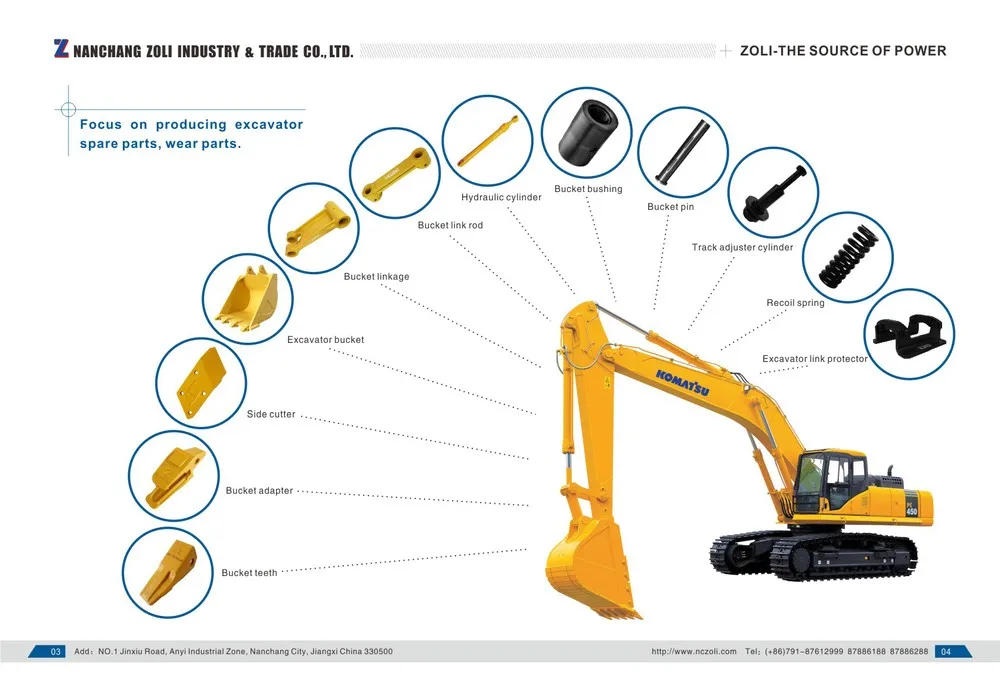 These excavators are used for larger job sites and projects.
These excavators are used for larger job sites and projects.
3. Suction Excavators:
Suction excavators use water jets and a high-pressure vacuum to clear dirt, soil, and debris. Operated out of a wheeled vehicle, the suction excavator is used for underground applications, debris cleanup, and other delicate excavation projects.
4. Long-Reach Excavators:
With arms that extend up to 100 feet with attachments, the excavator is good for heavy-duty digging, industrial demo projects, and reaching further than most other excavators.
5. Mini Excavator:
A compact, smaller version of a crawler excavator, mini excavators are useful in narrow job sites, job sites with obstacles, and jobs with delicate terrain like landscaping. Mini excavators have zero tail-wing capability and are ideal for small jobs. Mini excavators are also popular for home and DIY landscape projects.
When picking between renting an excavator vs a mini excavator, the size of the project and load size are usually the most important factors.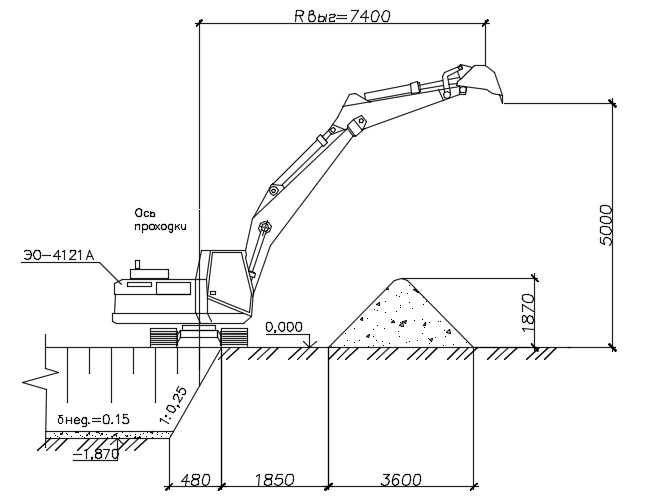
6. Wheeled Excavator:
The wheeled excavator is the same as a regular excavator but is fitted on wheels instead of tracks. Wheeled excavators are more popular in Europe and are typically used for working in urban areas since their wheels are kinder to finished roads and pavement than the traditional metal track. However, wheeled excavators are becoming more popular for their use in city projects.
Read more about the differences between tracked and wheeled excavators.
Popular Attachments for ExcavatorsThere are many different mini excavator attachments out there. Renting a specialized attachment can make your machine function more efficiently and work smoother for specific jobs. While there are 10 more popular types of excavator attachments - both for mini excavators and standard machines - you can pretty much rent the attachment that works best for the job you're doing.
The traditional excavator is fitted with a bucket that digs toward the cab and machine.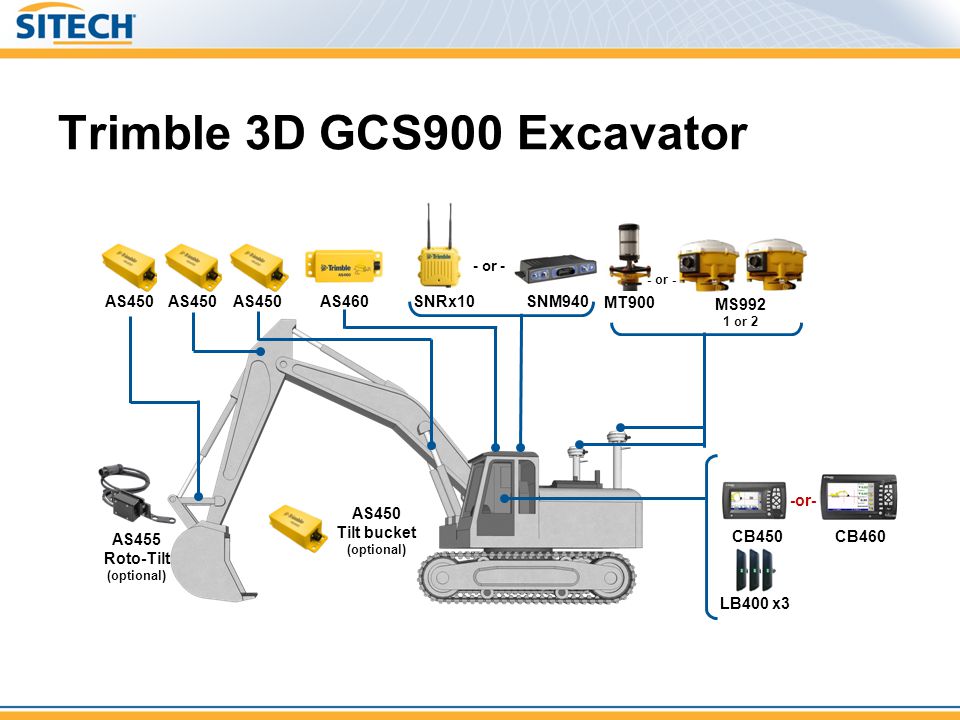 However, this type of digging arm can have a thumb attachment instead which makes it easier to lift and move materials. There are also several types of buckets that can be attached to an excavator.
However, this type of digging arm can have a thumb attachment instead which makes it easier to lift and move materials. There are also several types of buckets that can be attached to an excavator.
A rock bucket and a V bucket are two bucket types that can be attached to an excavator. A rock bucket looks similar to a digging bucket but with longer sharper teeth and a narrow V-shaped edge for cutting. The reinforced structural parts of a rock bucket give it the ability to break through hard rock while still maintaining structural integrity. The V bucket simplifies the task of digging trenches and is useful for laying utility cables and pipes.
Excavators can also be fitted with an auger attachment for digging holes, hammers for breaking up hard concrete and rock, rippers, compactors, rakes, and many other different kinds of tools. All of these attachments help to make the excavator a true multipurpose equipment type.
Manufacturers of ExcavatorsThere are many different manufacturers to consider when looking to buy or rent an excavator. Most companies make different sizes and models of excavators to accommodate projects of all sizes and natures.
Most companies make different sizes and models of excavators to accommodate projects of all sizes and natures.
A variety of excavators are available for rent through DOZR. There are options to search for excavators ranging from 18 tons to 80 tons as well as high-reach excavators, long-reach excavators, and wheeled excavators for rent. The following is a look at some more popular brands of excavator manufacturers.
Caterpillar
Caterpillar – also called CAT – was founded in 1925 when C. L. Best Tractor Company joined with Holt Manufacturing Company – the same Holt family responsible for the continual-track system. Caterpillar is one of the most recognized brands of heavy equipment and machinery and is one of the largest heavy equipment manufacturing companies in the world. Caterpillar introduced a series of excavators – called the 200 series – in 1972.
Now, caterpillar excavators feature fuel-efficient engines and the latest safety tech and are designed with productivity in mind.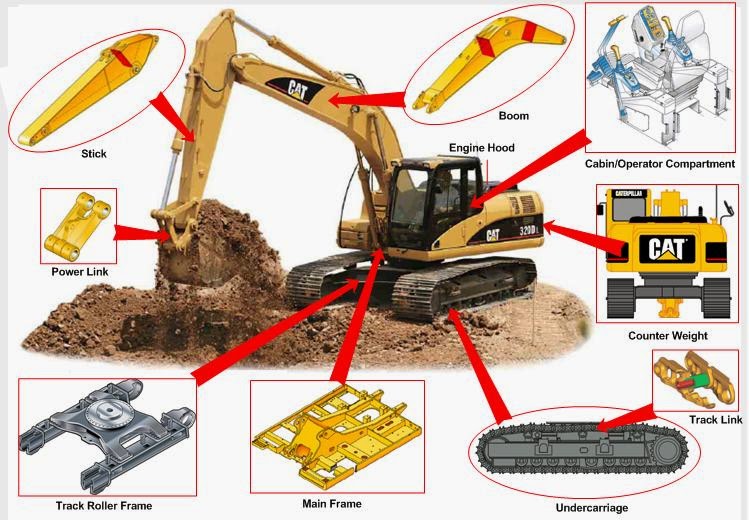 CAT excavators are some of the best-performing earthmoving machines on the market, making them very popular equipment rentals. Their largest excavator is the 395 - Tier 4 model weighing in at 207,300 lbs, just over 100 tons, with a dig depth of 32 feet.
CAT excavators are some of the best-performing earthmoving machines on the market, making them very popular equipment rentals. Their largest excavator is the 395 - Tier 4 model weighing in at 207,300 lbs, just over 100 tons, with a dig depth of 32 feet.
It was 1832 in Eskilstuna, Sweden when 27-year-old Johan Theofron Munktell prepared the foundations for the company Volvo Construction Equipment. Today, Volvo excavators continue to push the boundaries of earthmoving and digging equipment. In 2019, Volvo CE announced the goal of launching a range of electric compact excavators and wheel loaders by mid-2020.
Volvo's line of excavators includes larger crawler excavators, medium crawler excavators, medium-wheeled excavators, and compact, or short-swing, excavators. Volvo is most well-known for its wheeled excavators. Volvo's largest excavator is the EC950F weighing in close to 210,000 lbs or 105 tons with a maximum dig depth of just under 30 feet.
Komatsu was established in 1917 in Japan and established in North America later on in 1970. Their introduction to the American market for hydraulic excavators happened with their H-Series in the 1960s, a little before they truly established themselves in America.
Manufacturing all sizes of excavation machinery, Komatsu excavators are for all kinds of projects. With mid-size excavators, large excavators, and surface mining excavators, you're sure to find a Komatsu excavator that will be right for the job. The largest Komatsu excavator is the PC1250LC-11 with an operating weight of 270,000 lbs, a reach of up to 56 feet, and a dig depth of 38 feet.
John DeereJohn Deere established his company – named after himself – in 1837. In 1969 the first John Deere excavator, the JD690, was introduced. Now, they make over 20 different kinds of excavators ranging in size, weight, and horsepower.
John Deere's largest excavator, the 870 P-Tier, allows for almost 37 feet of dig depth and weighs over 188,000 lbs. John Deere also manufactures compact excavators, another name for mini-excavators, mid-size excavators, and other large excavators.
John Deere also manufactures compact excavators, another name for mini-excavators, mid-size excavators, and other large excavators.
Established in the early 1900s in Japan, Hitachi didn't start manufacturing construction equipment until the 1950s. Since then, Hitachi has become an innovator in heavy machinery and their excavators are no exception. Currently, Hitachi has 37 excavators on the market.
Hitachi excavators include all sizes of excavators ranging from their smallest non-mini excavator model, the ZX160LC-6, to their biggest excavator, the ZX890LC-6. These models have operating weights and dig depths of 39,000 lbs and 21 feet, and 186,511 lbs and 31 feet, respectively. Hitachi also manufactures mining excavators and mini excavators.
Hyundai
Founded in South Korea in 1985, Hyundai built their first excavators in 1988, a 21-ton excavator and a 29-ton excavator. Now, the portfolio of Hyundai excavators includes 16 current models and 28 previous models. The smallest Hyundai excavator model currently, outside of their compact excavators, is the HX130A LCR with an operating weight of just under 15 tons. Their largest excavator is the HX900L with an operating weight of 103 tons.
The smallest Hyundai excavator model currently, outside of their compact excavators, is the HX130A LCR with an operating weight of just under 15 tons. Their largest excavator is the HX900L with an operating weight of 103 tons.
Doosan
Creating its construction division in 1977, Doosan has been producing excavators since 1978. However, it wasn't until 1994 that Doosan excavators came to America. Doosan currently manufactures crawler excavators, wheeled excavators, and mini excavators. Between the crawler excavators and wheeled excavators, they have 18 products.
The smallest crawler Doosan makes is the DX140LC-7 with an operating weight of 16 tonnes (32,187 lbs) and a dig depth of just over 19 feet. The biggest Doosan excavator is the DX800LC-7 with an operating weight of 90 tonnes and a dig depth of over 27 feet.
Potential Hazards & Safety Protocols for Excavators
Operating any kind of heavy equipment could pose a safety hazard. It is important to always be careful and to only operate heavy equipment and digging machinery like excavators after receiving proper training.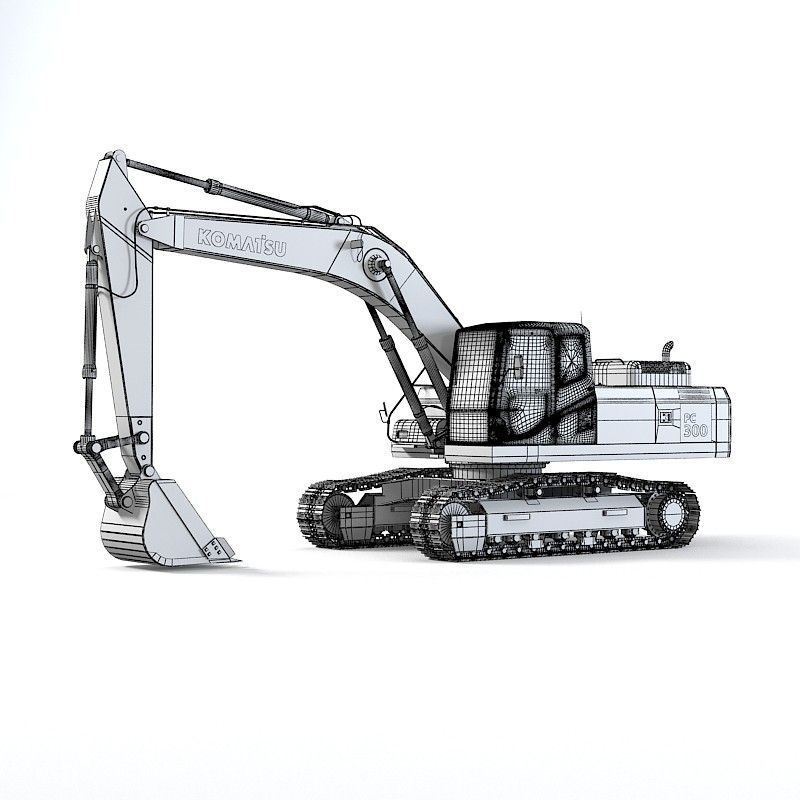 Being consistent and following safety protocols can help keep all excavation operations safe. Here are some ways to stay safe while operating an excavator:
Being consistent and following safety protocols can help keep all excavation operations safe. Here are some ways to stay safe while operating an excavator:
-
Never dig under structures like sidewalks without proper support systems
-
Wear a hardhat, safety vest, ear protection, and protection
-
Never dig underneath an excavator
-
Maintain the cab by cleaning up garbage and maintaining clear windows
-
Avoid making sharp turns or sudden movements while operating an excavator
-
Always lower the bucket when parked and park on a level surface
-
Do not travel diagonally on slopes but directly up
-
Map out an excavator route that is as flat as possible
-
Never exceed the maximum weight capacity of an equipment piece
-
Lower the bucket closer to the ground when driving for visibility purposes
-
Check all blind spots before moving equipment
-
Make sure to report any safety hazards and have any needed repairs performed immediately
-
Always wear a seatbelt
-
Check site plans and call local utility companies before beginning to dig
The most important point to remember for any operation of heavy equipment is to only do so if training has been provided and it is safe to do so.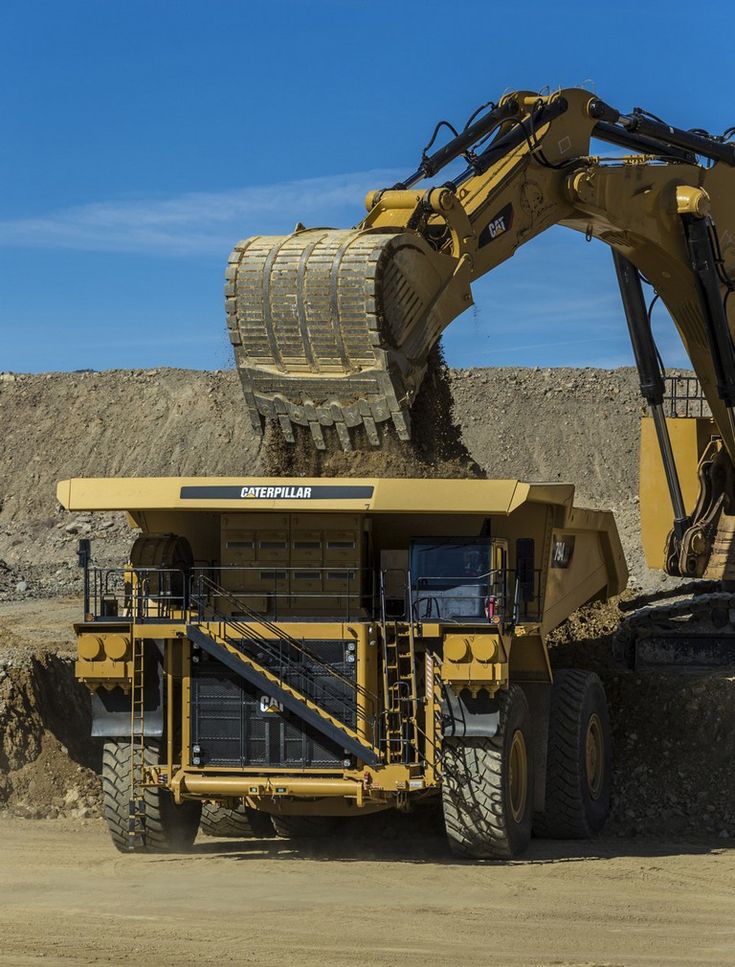 There are also some tips and tricks online for special projects like operating an excavator on a slope. Always request training before agreeing to operate a piece of new machinery.
There are also some tips and tricks online for special projects like operating an excavator on a slope. Always request training before agreeing to operate a piece of new machinery.
The first machine to resemble an excavator was the steam shovel. An ancient dinosaur next to the modern excavator, this piece of equipment was a game-changer when it was invented by William Otis who in 1839 received a patent for the design. It was originally fitted on railway tracks to allow mobility.
The machine could move up to 300 cubic yards a day compared to the 12 cubic yards that could be moved by a man. This machine was used to build the Panama Canal and dig the foundations of early skyscrapers. The machine was used and updated into the 1920s as tracked and wheeled equipment became more popular. In 1931 the last railroad shovel was shipped.
Much like with the bulldozer and other pieces of equipment, various pieces had to come together to create the excavator.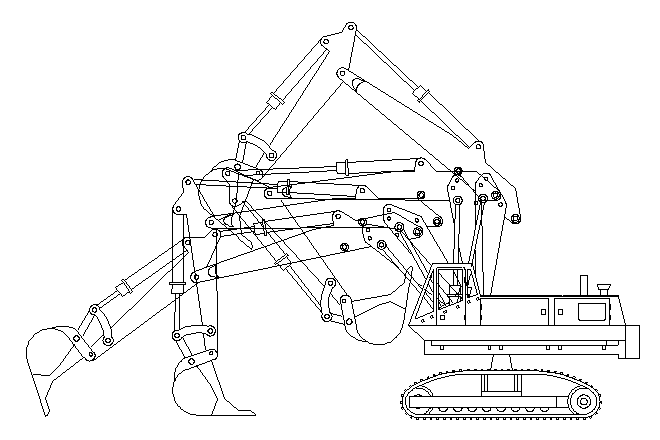 Sir W.G. Armstrong & Co. was a British business that had developed the hydraulic system that would be used in the modern excavator.
Sir W.G. Armstrong & Co. was a British business that had developed the hydraulic system that would be used in the modern excavator.
Designed to use water instead of hydraulic fluid, this system was invented in 1882. The first hydraulic shovel was patented by Kilgore Machine Co in Minnesota in 1897 and used the technology developed by Sir W.G. Armstrong & Co.
None of these excavators could rotate the full 360 degrees that exist now with the modern excavator. This didn’t happen until the 1960s when a French company called Poclain invented an excavator with cylinders and a hydraulic pump. The TY45 made history as the first fully revolving hydraulic excavator.
The Excavator: FAQCan excavators be used for land clearing?
Excavators are one of the best land-clearing equipment rental options. They're great for clearing trees and moving heavy loads and their tracks make them great for uneven terrain. If you're looking to rent land-clearing equipment, excavators are a great choice.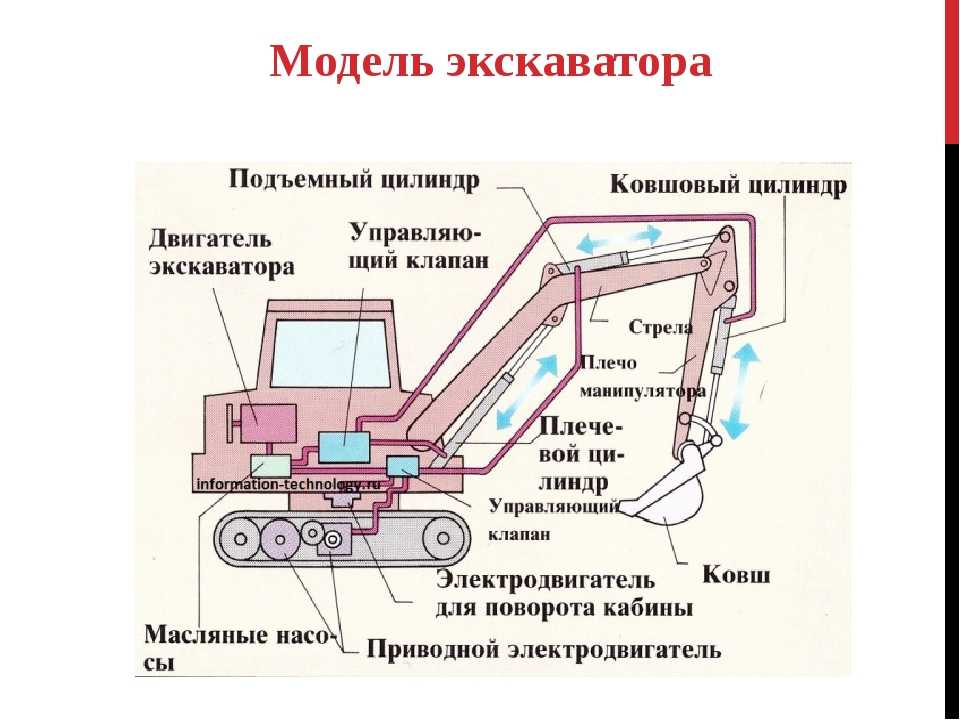
What is the difference between an excavator vs a backhoe?
Excavators are larger machines that are used primarily for heavy-duty jobs like trenching, demolition, mining, and land clearing because they have longer arms and can dig deeper than a backhoe. Excavators also provide more digging functionality because they can turn on their cab a full 360 degrees.
Backhoes are smaller excavating machines that offer more versatility but are typically seen on smaller construction projects like residential, snow removal, or loading jobs because of their limited dig depth potential. Whether you pick between a backhoe vs an excavator is dependent on the size of the job.
How deep can an excavator dig?
The depth capacity of an excavator will depend on the size of the equipment. Some specific kinds of excavators – like a long-reach model – make it easier to dig deeper than possible with a regular excavator. Typically, the heavier the operating weight of the excavator the deeper it can dig but it's always worth reviewing the specifications of the equipment before use.
What is the proper digging position for an excavator?
The proper position for digging with an excavator will differ depending on the terrain, the size of the equipment, the location of the dig site, and the nature of the job.
The best way to set up a dig for success is to take the time to plan before starting. Organizing where the scoop pile will go and where to stage other needed materials will keep the dig safe once it is started. Reading site plans to identify underground hazards like wires or pipes will ensure the productivity and efficiency of a job. Take time to paint lines before digging to align the first dig.
All of these steps help to create a safe working environment which is the first step to proper digging with an excavator.
Can I rent an excavator?
Yes, excavators can be rented for use. You can search DOZR Marketplace for excavators of all sizes to find an excavator rental near you. Rentals are available by the day, week, or month depending on your project length and needs.
The cost to rent an excavator changes depending on the length of the rental and who the supplier is. You can view all prices and compare them in the DOZR search results.
What is an excavator and what's it used for?
On virtually every construction site, you'll find at least one excavator. But what is an excavator? What do they do, and why are they integral to almost every Dirt World project? In simplest terms, excavators are large industrial machines used to move large amounts of material, like rock and soil. That means they do everything from digging a basement to laying pipe to mining.
But that's just the tip of the iceberg. We've got to get a little deeper to understand all the ways excavators are used and why they're so important in the Dirt World.
What is an excavator?
The next time you drive by a construction site, look for a big machine with a moveable boom with a bucket. It'll probably be on tracks or wheels, and it'll probably be busy moving a heavy amount of soil, gravel, or anything else that's a) heavy and b) needs to be moved elsewhere.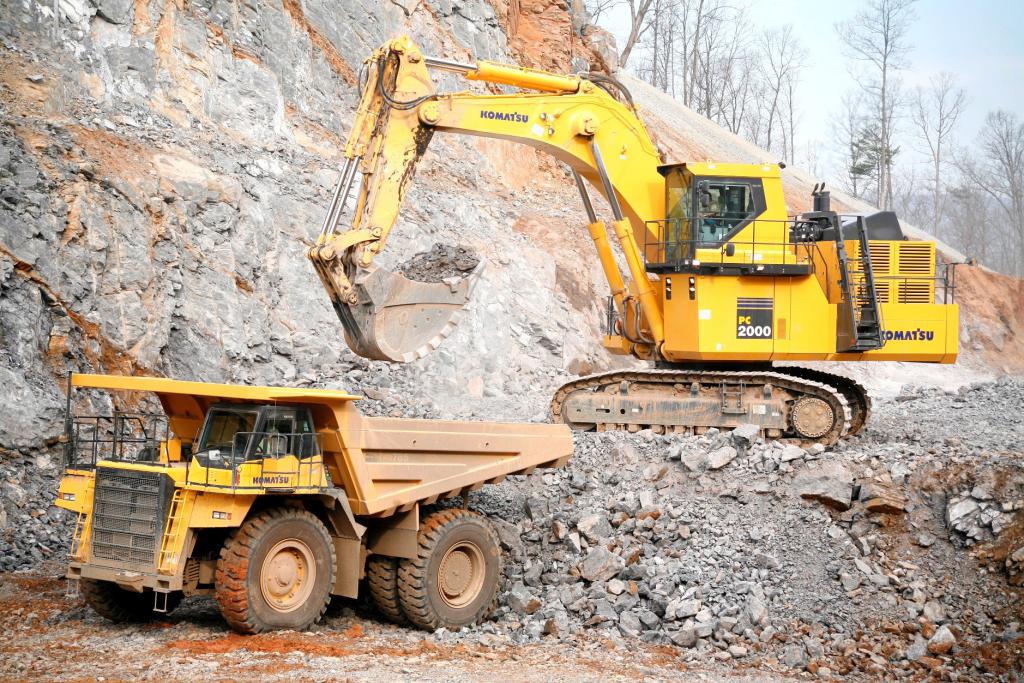
These machines use hydraulics to move the boom and bucket, not unlike how the steam shovels of yore used steam — but excavators are a lot quieter, more maneuverable, and much more eco-friendly.
What's an excavator used for?
Maybe the question should be, "what are excavators not used for?"
They can dig, haul, and — with the proper attachments — even boreholes and drive piles. But since we're digging deep, an excavator can be used to:
- Dig trenches, foundations, pools, or even graves
- Handle and haul material like soil and gravel
- Mine
- Dredge rivers
- Load haul trucks
And with the right kind of specialized attachment, excavators can:
- Break down other machinery when needed
- Cut trees and brush
- Create mulch
- Demolish buildings and other structures
- Drive piles and shafts
In short, they're a jack-of-all-trades around the job site, and that's why virtually every job site has at least one excavator on hand.
What’s the difference between an excavator and a backhoe?
One common misconception is that excavators and backhoes are the same, and they frequently get misidentified as one another. After all, excavators and backhoes look a lot alike to someone outside the Dirt World looking in. They're both (usually) on wheels or tracks, they both have buckets, and they're both used for just about everything.
But backhoes and excavators are very different machines used for very different jobs. There are three main differences between excavators and backhoes:
Size and Weight
Excavators are standalone machines that were built to, well, excavate. On the other hand, backhoes are often just attachments that mount on the front or rear of a conventional tractor by what's known as a king pivot (and they're still called "backhoes" even when mounted on the front). You can find backhoes on farms and smaller projects where less power and hauling capacity are needed. Because of their small size, utility companies will also use backhoes in tight urban environments.
On the other hand, backhoes are often just attachments that mount on the front or rear of a conventional tractor by what's known as a king pivot (and they're still called "backhoes" even when mounted on the front). You can find backhoes on farms and smaller projects where less power and hauling capacity are needed. Because of their small size, utility companies will also use backhoes in tight urban environments.
Versatility of Function
Backhoes come with a similar range of attachments as excavators, but since they also feature a front loader with a coupler, they become much more versatile. Here's a small selection of attachments:
- Augers
- Brooms
- Buckets
- Compactors
- Hammers
- Rippers
- Thumbs
- Pallet forks
- Rakes
- Snowplows
And while many of these can also be attached to excavators, most companies that operate excavators don't bother since they use purpose-built machinery to accomplish many of these same tasks.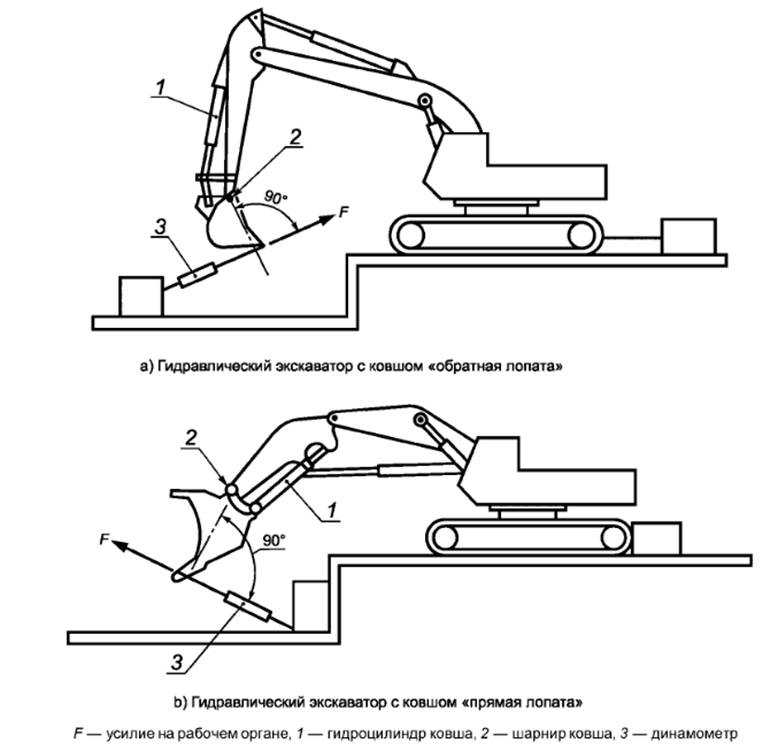
Rotational Range
Since backhoes are mounted to the front or rear of conventional tractors, they don't have the same rotational range as excavators. Most backhoes can only rotate about 200 degrees or so, while excavators can rotate 360 degrees — in other words, a full circle.
What are the different types of excavators?
The range of excavator types is almost as diverse as the jobs the excavators perform. Let's look at the most common types you'll likely see on your next job site.
Crawler or Compact Excavators
Crawler excavators are everywhere, and they're probably what most people imagine when they think of the word "excavator." They're on tracks (like a tank), typically feature an enclosed cab, and use a hydraulically powered boom to dig through heavy material. They work in virtually every type of terrain — albeit slowly.
Pro: Being on tracks makes them sure-footed on uneven or muddy terrain.
Con: Being on tracks makes them slower than some other excavator types, especially on smooth surfaces like asphalt. The tracks are also much more expensive to maintain and can cause damage to asphalt or concrete pavement.
The tracks are also much more expensive to maintain and can cause damage to asphalt or concrete pavement.
Wheeled Excavators
Wheeled excavators don't differ much from crawlers, aside from being on wheels rather than tracks. Wheels make them faster and more maneuverable on roads and other asphalt or concrete surfaces, making them unstable on muddy or hilly terrain. These wheeled excavators will often run around on large-scale highway projects where they frequently have to travel long distances between work.
Pro: They can mobilize from job to job faster.
Con: They're more useful on smooth surfaces and require a more skilled operator.
Long-Reach Excavators
Call on a long-reach excavator when you need to dig something that's in a hard-to-reach place. As you probably guessed, they're noteworthy for their long booms, which can reach material more than 100 feet away. You’ll often find long-reach excavators in dredging applications where the machine can’t get to the material without sinking.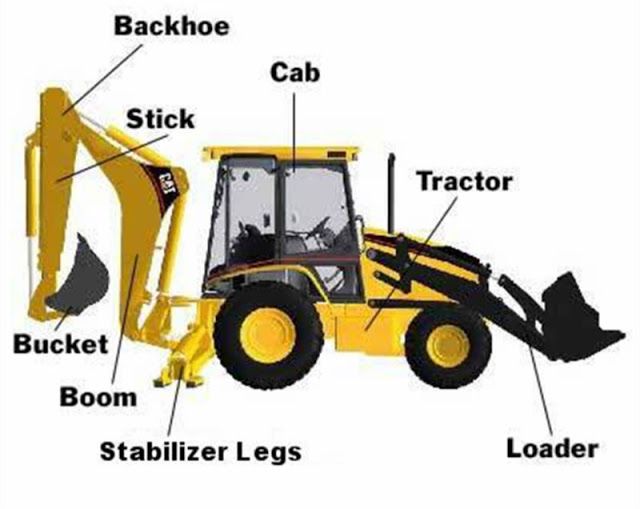
Pro: Their long reach makes it easy to reach material in a difficult or awkward location.
Con: Their long boom makes them difficult to move and maneuver — and they take up a lot of space when not in use.
Ultra-High Demolition Excavator
Need to take down a super tall building with incredible precision? Bring in the UHD or ultra-high demolition excavator. These units are purpose-built demolition machines based around your typical excavator's chassis. They usually feature a massive two-piece boom in straight segments, a tilting cab, so the operator isn’t breaking their neck all day, and a larger undercarriage to stay more balanced with all the extra weight. These machines are great for taking down tall structures up to 200’ tall, but that massive reach allows the operator to demo the structure at a safe distance without being hit by debris.
Pro: They’re capable of taking down large buildings with ease.
Con: These machines have a much higher operating cost than most excavators and are a huge pain to transport.
Hydraulic Front Shovels
These massive machines may be standard in mining operations or the heaviest of civil construction projects, but you're not likely to encounter one on a job site. The buckets on these behemoths can hold up to 65 cubic yards of material — making hydraulic shovels just a little overkill for a typical Dirt World project.
Pro: Big
Con: Big
Suction or Vacuum Excavators
The others on this list are massive, earth-moving brutes, but the suction excavator is more like a surgeon's scalpel. The vacuum excavator system shines when digging around buried and active underground utilities. A typical excavator would likely damage these costly utilities, but a vacuum excavator is more gentle and precise. They utilize a pressurized water jet system, much like a pressure washer you’d use to clean your car, to break up the dirt. Then they suck it up with a giant metal hose and haul it away–this enables a suction excavator to extract material from a small area fast – at speeds of up to 200 miles an hour. You’ll most commonly find these mounted to on-road trucks that look like tankers with an elephant truck out front.
Pro: They're good for precise underground operations, like pipes and drains.
Con: They suck — it's the only thing they do, so if you need a ton of loose soil moved from a large area, a suction excavator isn't much use.
Fun fact: the world's largest excavator is the Bagger 293, a bucket-wheel excavator. You won't see that variety of excavator in the field, though: it's the world's largest land vehicle at 315 feet tall, 738 feet long, and weighing in at an eye-watering 31.3 million pounds.
What are the common parts of an excavator?
What's an auger? Or a stick? Or a slew ring? Don't worry; we'll explain all the most common parts of an excavator so you can sound like an excavator expert on the job site.
- Bucket — The steel container at the end of the dipper or stick, used to lift and handle materials
- Linkage — Links the bucket to the dipper, provides vertical movement
- Dipper (or stick) — Attaches the linkage and bucket to the boom
- Boom — Raises or lowers the dipper or stick
- Cab — Where the operator sits and manipulates the excavator's controls
- Car Body — What the cab is mounted on (think "frame and chassis")
- Cylinders — The hydraulic mechanisms used to move the boom and dipper
- Engine — You know this one — it’s the powerplant and heart of the machine
- Tracks — The interlinked steel plates that the excavator runs on
- Sprockets — Connects to the final drives and rotates the tracks forward and backward
- Slew ring (or swing bear or swing bearing) — The circular metal ring enables the excavator to rotate in a circle.
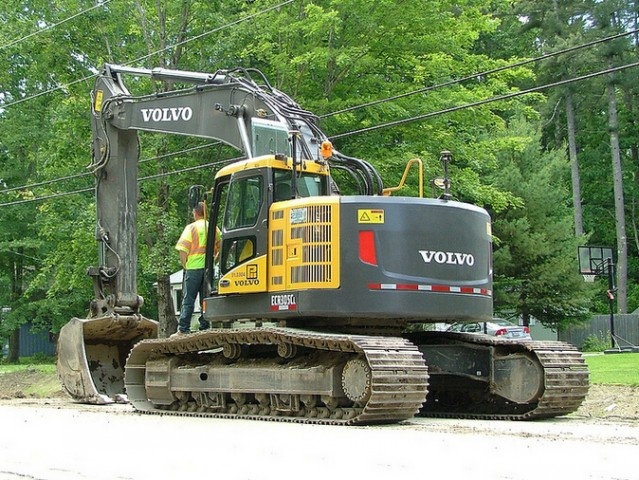 Attaches the car body to the chassis
Attaches the car body to the chassis
Of course, there are more, but these are the parts you're most likely to see and maybe even interact with on the job site.
Learn more about the Dirt World.
The Dirt World is full of exciting machines like excavators. If you'd like to learn more about them and other aspects of the Dirt World, including industry news, expert insights, and best practices from the experts, download the BuildWitt app today. It's designed for the Dirt World.
90,000 scheme, principle of operation, mechanism, hydrospace, hydraulic system, chassis, electric circuitContent
- How the aggregates
- are classified as an excavator
- Shipping device
- hydraulic system
- 9000
- Electric circuit 9000
- Work of the exquisite
Excavators are designed to work with frozen or not frozen ground, as well as with pre-crushed rock. The temperature range of equipment operation is -40…+40°С.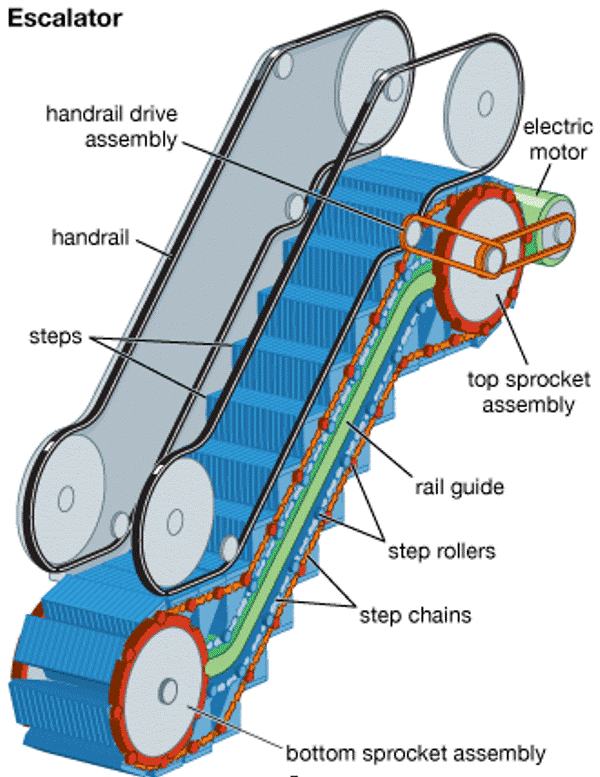 The excavator device includes several nodes that ensure the operation of the machine. nine0003
The excavator device includes several nodes that ensure the operation of the machine. nine0003
How the units are classified
Excavators equipped with a working body with one bucket are divided into categories:
- By functional purpose. There are machines designed for construction work, special and career. The latter are equipped with a reinforced bucket designed to work with rocks.
- According to the design of the chassis - wheeled on a special chassis, wheeled on an automobile chassis, caterpillar. The latter can be equipped with caterpillar tracks with increased width. nine0006
- According to the type of drive of the working body - hydraulic, electric, combined.
How the excavator works
The general structure of the earthmoving excavator includes:
- undercarriage;
- engine;
- hydraulic system;
- transmission;
- cab with controls;
- platform with swivel device;
- working boom.
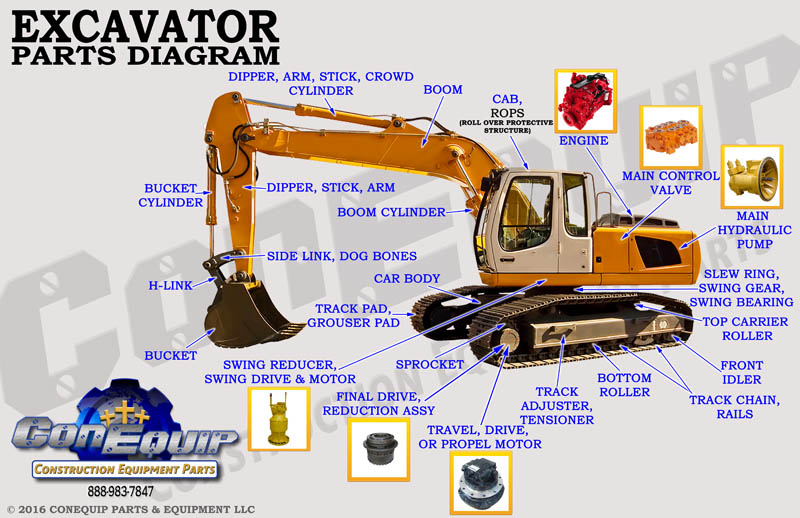
A compression ignition internal combustion engine is mounted on a turntable. nine0060 The motor has a liquid cooling system. The cooling fan drive is automatic, but there is a forced activation key. To increase power and reduce fuel consumption, the installation of turbochargers is used. The engine drives the working mechanisms of the excavator through a hydraulic or electric transmission. Mechanical transmissions are used on obsolete vehicles.
The swivel is mounted on the chassis with a 360° swivel strap. The platform houses the operator's cab, hydraulic and electrical systems, boom with drive and control mechanisms. The excavator boom can be equipped with various designs of buckets or a ditcher, which reduces the time required to create trenches. It is possible to install hydraulic hammers or other equipment necessary for earthmoving. nine0003
Mechanically driven excavators use winches that directly control the movement of the boom. On machines there are winches with 1 or 2 shafts. A 1-shaft unit is one in which the lifting and traction drums are mounted on a single shaft. If the winch drums are spaced along the shafts, then it is called a 2-shaft winch. Similar mechanisms are installed on large excavators.
A 1-shaft unit is one in which the lifting and traction drums are mounted on a single shaft. If the winch drums are spaced along the shafts, then it is called a 2-shaft winch. Similar mechanisms are installed on large excavators.
The winches are driven by shafts through a gearbox or by a chain, carried out from the main transmission shaft. Multi-disc friction clutches are used to engage, and band brakes are used to stop. The cable is laid on the drum in one or more layers, depending on the length. nine0003
The design of the mini-excavator does not differ from the principles laid down in the full-size equipment. The difference lies in the simplification of the hydraulics design and the use of a small-sized diesel engine. The operator's workplace is located in a closed cabin equipped with ventilation and heating systems.
The backhoe loader is different from the above. The work bucket is located on the articulated boom at the front of a standard wheeled tractor. Loading equipment has a hydraulic drive, which is controlled from the operator's cab. nine0003
Loading equipment has a hydraulic drive, which is controlled from the operator's cab. nine0003
The tractor is built according to the classical scheme - the engine and gearbox are part of the supporting structure. A subframe is installed in front, which serves to support the engine and front axle. An excavator boom or other earth-moving equipment equipped with a hydraulic drive is mounted on the rear of the machine. The boom can rotate at a fixed angle. When digging pits and trenches, the equipment moves under its own power.
Slewing ring
Tractor-mounted excavators are steered by hydraulic cylinders. On full-rotation equipment, there is a hydraulic or electric drive that rotates the platform with working equipment around a fixed undercarriage. nine0003
The excavator's slewing ring ensures the rotation of the platform around the vertical axis. Increased requirements are imposed on the strength of the assembly, since it ensures that the platform is kept on the chassis during the operation of the excavator. In the design of the rotary device, bodies of rotation in the form of rollers or balls are used.
In the design of the rotary device, bodies of rotation in the form of rollers or balls are used.
Rollers are used on older models of excavators. The disadvantage of the design is the gap between the body of rotation and the working surface of the shoulder strap, which leads to the swinging of the platform during the turn. Ball devices are devoid of this drawback. In addition, the ball swivel shoulder strap has less weight and reduced rotational resistance. Rotation bodies are installed in a ball structure in 1 or 2 rows. nine0003
The swivel mechanism consists of 2 rings, which are bolted together. The mechanism is rigidly attached to the turntable. The balls located inside are separated by a separator, which prevents the assembly from jamming during operation.
A ring gear is installed on the turntable to turn the platform. For rotation, an axial piston motor equipped with a toothed working shaft is used. It is possible to use mechanical gearboxes that increase the torque. The rotation speed is controlled by changing the oil pressure supplied to the hydraulic motor. The platform is kept from accidental rotation by mechanical and hydraulically actuated brakes. nine0003
The rotation speed is controlled by changing the oil pressure supplied to the hydraulic motor. The platform is kept from accidental rotation by mechanical and hydraulically actuated brakes. nine0003
Crawler excavators deploy using tracks and brakes. Depending on the turning radius, braking of one track with different force is used.
Hydraulic system
The excavator's hydraulic system is powered by axial piston or gear pumps mounted on the machine's engine. The pumps are driven through a step-up gearbox. The engine may have a small pump used to operate the hydraulic boosters. The pump is driven by gears of the gas distribution mechanism. nine0003
The supply of working fluid is located in a supply tank equipped with an oil purification system from impurities. As a working fluid, a special oil is used, adapted to work in axial piston units and does not destroy the rubber elements of the lines. There are summer and all-weather oils, which differ in pour point.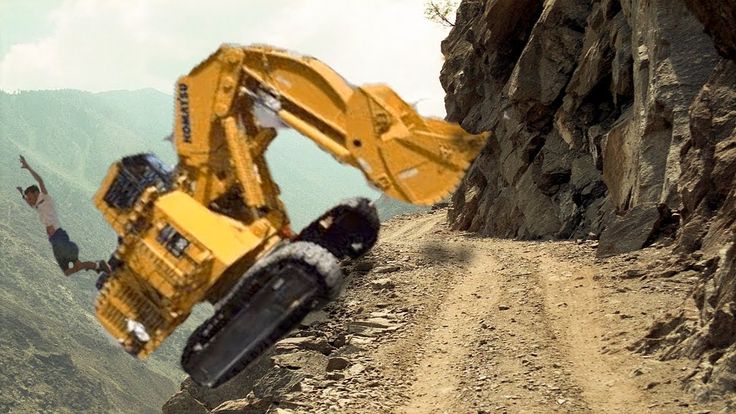
Fluid is supplied from the tank to the pump and then to the hydraulic distributor. Flexible hoses and metal pipelines are used to connect the hydraulic circuit nodes. The couplings installed on them connect the nodes into a common line, ensuring the tightness of the structure. The distributor is equipped with spool valves that supply fluid to the hydraulic equipment. The used oil enters the radiator, and then, after passing through the filters, it returns to the tank. nine0003
Safety valves are installed in the hydraulics to protect the system from overpressure. Bypass valves are used, which divert part of the liquid into containers with reduced pressure. Flow control is performed by chokes and spools that block the cross section of the lines. On some mechanisms, a hydraulic lock is used to prevent the backflow of fluid. Such valves are used on outriggers.
2-way hydraulic cylinders are used to operate the boom. Cylinders are used to turn the boom, change the angle of the handle, control the movement of the bucket.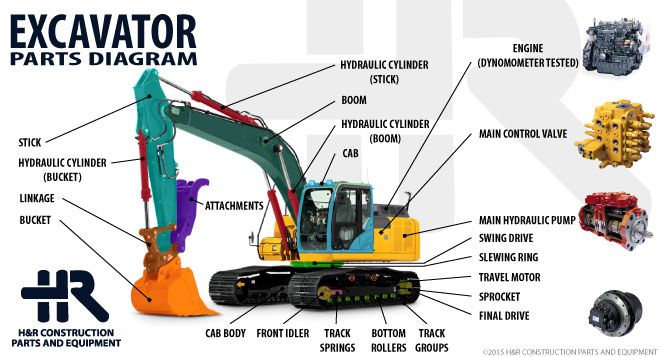 The cylinder rods have an eye that connects to the controlled units. nine0003
The cylinder rods have an eye that connects to the controlled units. nine0003
Hydraulics used as the transmission of the excavator. Axial piston motors are installed on the drive wheels or sprockets. The speed of the machine depends on the working pressure in the hydraulic system. The pressure is regulated by the number of engine revolutions, as well as by the hydraulic valve. The steering is equipped with an amplifier connected to a common or separate line. With the help of hydraulics, the brake mechanisms on the wheels and working bodies function.
Chassis
The undercarriage is designed to move machinery and transfer loads from units and working equipment to the supporting surfaces.
There are 2 running gear options:
- wheeled with pneumatic tires;
- tracked.
Wheel chassis consists of 2 driven axles. The front axle is equipped with movable knuckles that ensure the rotation of the excavator when moving. In the design of the controlled axle, stabilizers are used to ensure the lateral stability of the machine.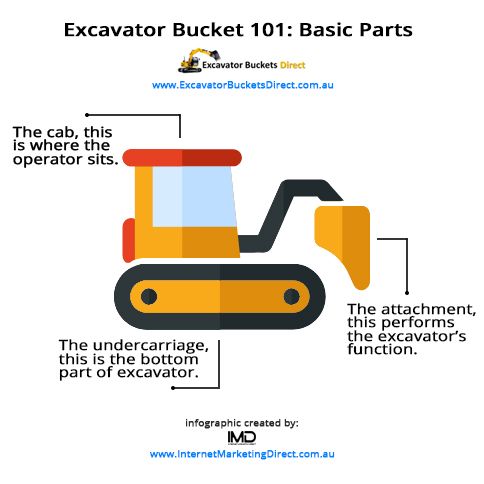 The advantage of pneumatic machines is the high speed of movement, which allows you to move the excavator between construction sites without additional transport. nine0003
The advantage of pneumatic machines is the high speed of movement, which allows you to move the excavator between construction sites without additional transport. nine0003
On wheeled vehicles there are brakes equipped with a pneumatic drive. A compressor mounted on the engine is used as a source of compressed air. From the pneumatics, the differential lock mechanisms and the connection of the front axle work. When towing an excavator, the pneumatic system is connected to the outlet of the brake system of the tractor.
The wheels are driven by individual hydraulic motors or from a single engine and transfer case. The box is connected to the bridges by cardan shafts. Wheel suspension is missing. The axle drives use differentials with the possibility of positive locking. Planetary gearboxes are installed in the wheel hubs to increase the torque. nine0003
Tracked machines are equipped with gauge changers to increase machine stability. For work in swampy areas, extended caterpillars are used, which are installed on standard rollers and drive wheels. Crawler excavators have a low speed, so they are transported on special trailers.
Crawler excavators have a low speed, so they are transported on special trailers.
Older excavators use a chain drive to drive the drive sprockets, which is not very reliable. Electrical installations can be used as engines on such equipment. The source of electricity is a traction generator or an external device. Individual hydraulic motors provide increased maneuverability and reliability in operation. nine0003
Wiring diagram
Excavator wiring diagram uses the machine body as the negative conductor. The operating voltage of the electrical equipment in the circuit is 12 or 24 V. The current sources are a generator mounted on the engine and a battery.
The main purpose of the electrical system is to start the engine and illuminate the working area around the machine at night.
Electric drives have a driver's cab ventilation system, instrumentation and external light signaling. Autonomous heaters are installed on excavators operating at low temperatures.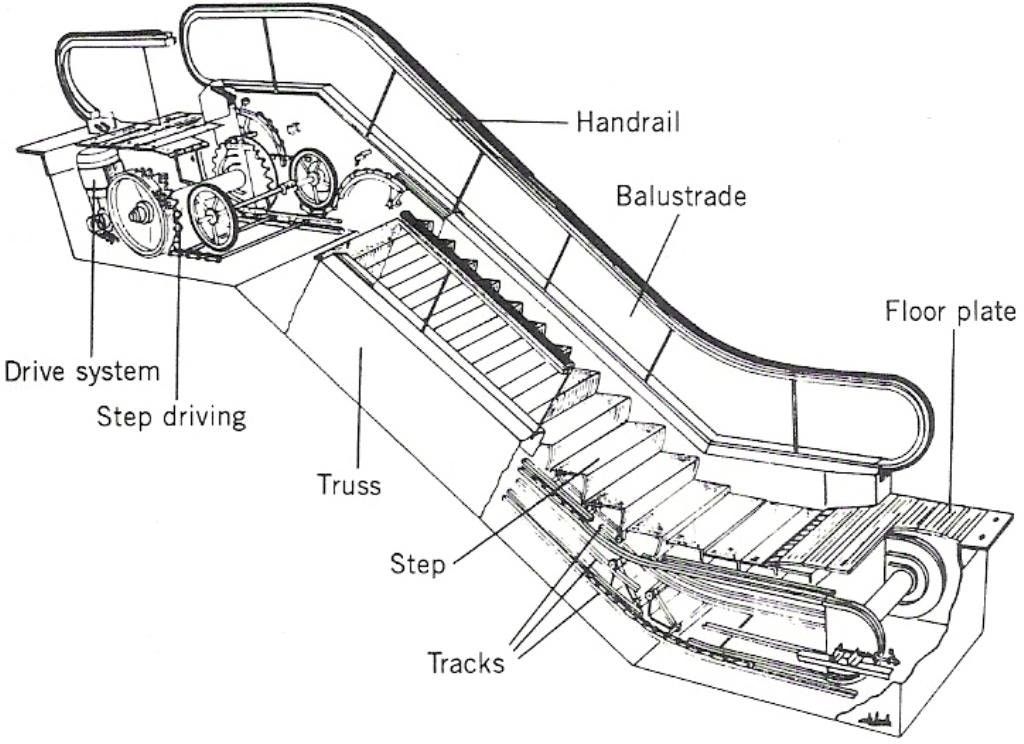 The devices warm up the engine and cab to a comfortable temperature. nine0003
The devices warm up the engine and cab to a comfortable temperature. nine0003
The principle of operation of the excavator
Equipment equipped with one bucket performs work cyclically, because of this, activity is carried out intermittently. This ensures the versatility of the machine, the excavator can be used for loading and unloading. The boom cylinder installed on excavators can be powered by hydraulics, as well as switch to a floating mode, which allows loading the bucket with the weight of the equipment. Activation of the floating mode is performed by the driver, if necessary, by pressing the pedal. nine0003
The operation of the excavator is as follows:
- at the first stage of the working stroke, soil is taken from the trench into the bucket;
- after that, the platform rotates around the vertical axis, transferring the soil to the dump site;
- then a reverse run is performed and the cycle starts anew.
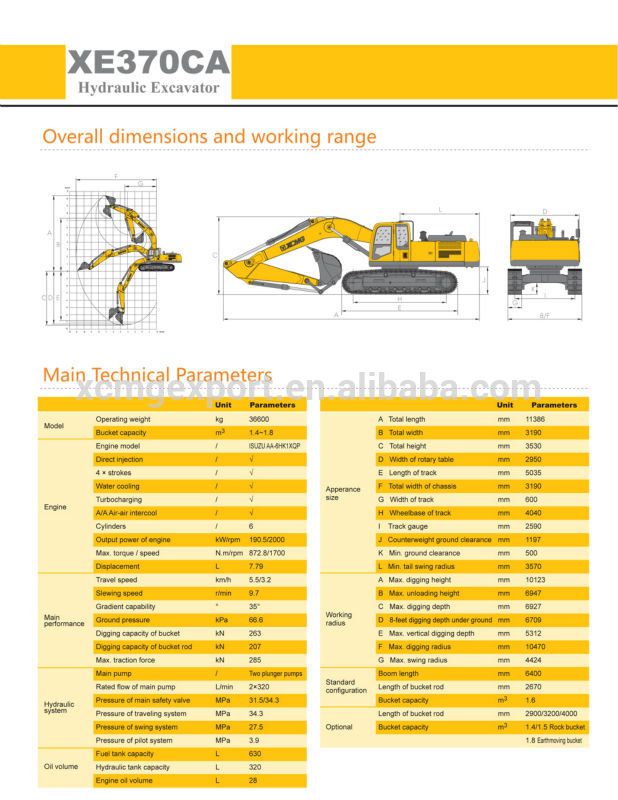
The principle of operation of a continuous excavator is based on the movement of several buckets, which automatically throw the soil to the side, forming a dump. The working elements are mounted on the rotor or chain. Chain excavators use a mounted or semi-trailed working body. The chain sprocket is driven mechanically or hydraulically. Digging depth and force are generated by a hydraulic mechanism. The excavated soil is fed onto a conveyor belt, which takes it to the side. nine0003
Additionally, the excavator is equipped with a dozer blade controlled by a hydraulic cylinder. The knife is used to level the working area.
How an excavator works
Single bucket excavators are machines with cyclical action, since due to the presence of only one bucket, continuous work becomes impossible, and therefore excavation and transfer of soil is carried out cyclically. This somewhat reduces labor productivity compared to multi-bucket counterparts. However, in view of the versatility of use and the possibility of installing special nozzles that expand the capabilities of this special equipment, it is in steady demand when performing various types of work with the soil. Most often, excavators are used in conjunction with other special equipment. For example, during the construction of roads, they interact with bulldozers that produce a dump of waste soil. nine0003
Most often, excavators are used in conjunction with other special equipment. For example, during the construction of roads, they interact with bulldozers that produce a dump of waste soil. nine0003
How does a single bucket excavator work?
Any single-bucket model sequentially performs:
- scooping soil with a bucket;
- moving it to the right place where it will be unloaded;
- overturning of the bucket, accompanied by spillage of soil.
This equipment consists of three main units:
- running gear;
- turntable;
- specialized equipment that allows you to perform a certain type of work. nine0003
The undercarriage ensures the movement of the load. It receives and transmits the load from the machine. Modern special equipment has three types of undercarriage:
- caterpillar. The traditional option, which, however, is not suitable for use in the city. Such cars cannot navigate the tracks on their own;
- pneumatic wheel;
- wheeled, ideal for the city. So the wheeled Hyundai R 170W-7 model can move on roads for various purposes on a par with conventional cars. nine0003
So the wheeled Hyundai R 170W-7 model can move on roads for various purposes on a par with conventional cars. nine0003
Rotation of the platform is provided by a turntable. Typically, the rotation is 360 degrees. However, there are also part-turn machines that are not able to make a full turn.
In addition to the standard equipment, modern models can be equipped with additional equipment, which allows to significantly expand the possible area of their use. This can be, for example, a hook or a hydraulic hammer head.
Depending on the type of suspension, the division is made into models with:
- flexible. In this design, the arrow is fixed on the ropes;
- rigid. Work is carried out through the use of a swivel joint. The equipment is driven by hydraulic cylinders;
- telescopic boom.
In addition to cyclic machines, continuous excavators are produced. Due to their design, they are able to work continuously. Such special equipment throws the soil to the side, creating a dump.

